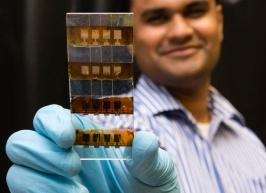Studies are under way to produce next-generation solar panels and cells that are more efficient and cheaper compared to today’s versions.
In Australia, engineers from the University of New South Wales will be joining hands with US and European researchers in hopes of producing next-generation solar panels. According to media reports, the group is targeting to have new silicon solar cells with 29 per cent conversion efficiency to keep it at par with the world record of 25 per cent done by UNSW scientists back in 2008.
In the United Kingdom, Welsh scientists are currently in the process of developing next-generation solar panels energy cells that are not only cheaper but more environment friendly compared to today’s models.
Researchers at the Swansea University are polishing solar cells that are thin and light. Media reports say that the solar cells are up to 30 times thinner compared to a single strand of hair. The cells are also made out of a few milligrams of tin, zinc, and copper.
The research project is part of a £2m initiative with funding support from the Engineering and Physical Sciences Research Council (EPSRC). The program aims to develop the next-generation solar cell energy which is safer and appropriate for large-scale use in the United Kingdom.
Next-Generation Solar Panels Made Using Perovskite
Dr. Trystan Watson who is part of the Swansea research team said that raw materials needed in the production of solar cells are not only expensive and toxic but also scarce. These raw materials include gallium and cadmium. He added that their search team will replace these elements with abundant, new and active elements that are easier to source and environmentally sustainable.
In Asia,Singaporean scientists are also working on efficient yet cheaper solar panels. Scientists from the Nanyang Technological University in Singapore have developed a next-generationsolar panels cell manufactured from organic-inorganic amalgam perovskite materials that are around five times cheaper compared to thin-film solar cells used today. According to the scientists, perovskite can convert up to 15 per cent of captured sunlight to electricity, nearly as efficient of current solar cells.
Given more time for research, the scientists believe that solar cells based on perovskite materials can reach up to 20 per cent efficiency which is better than the 15 per cent of current solar cells. On another note, perovskite materials are amenable to different colours like yellow and red. From an architectural standpoint, the use of this material means solar panels can be designed to conform to the design requirements of households.



